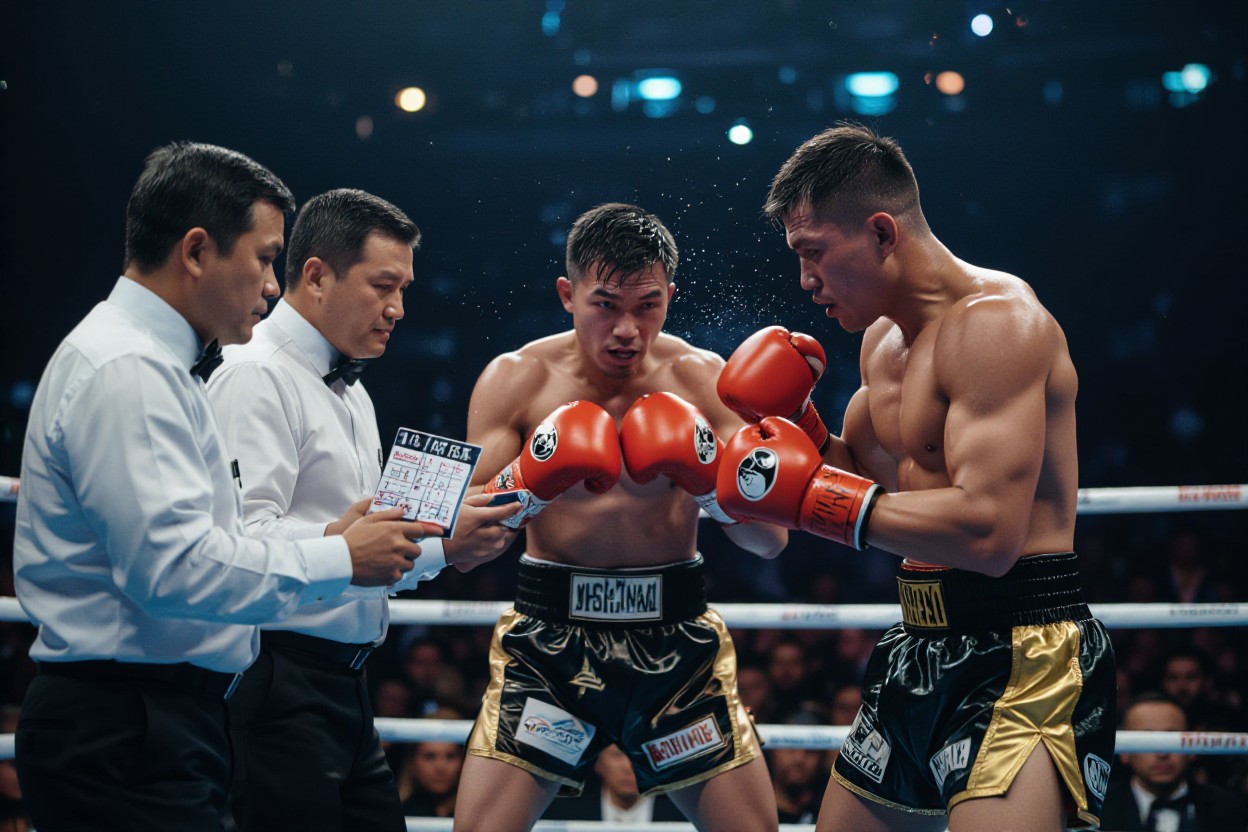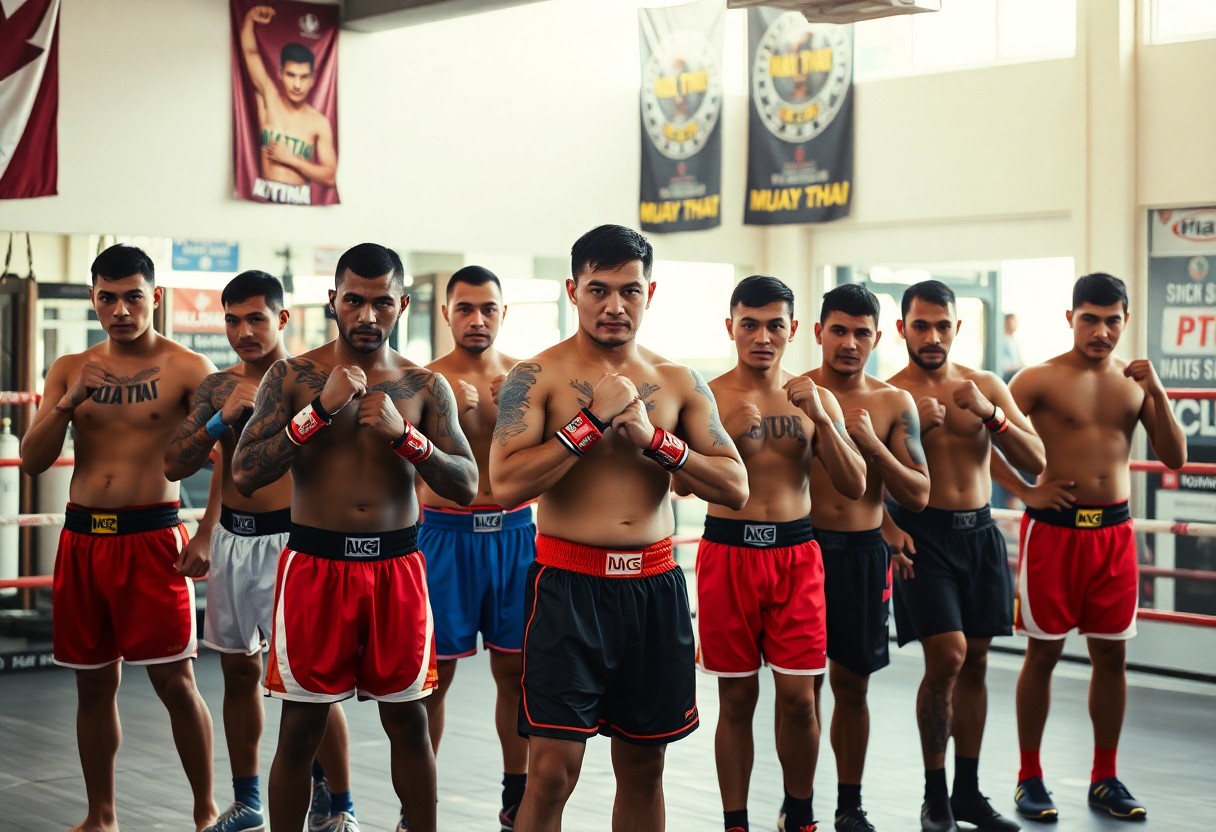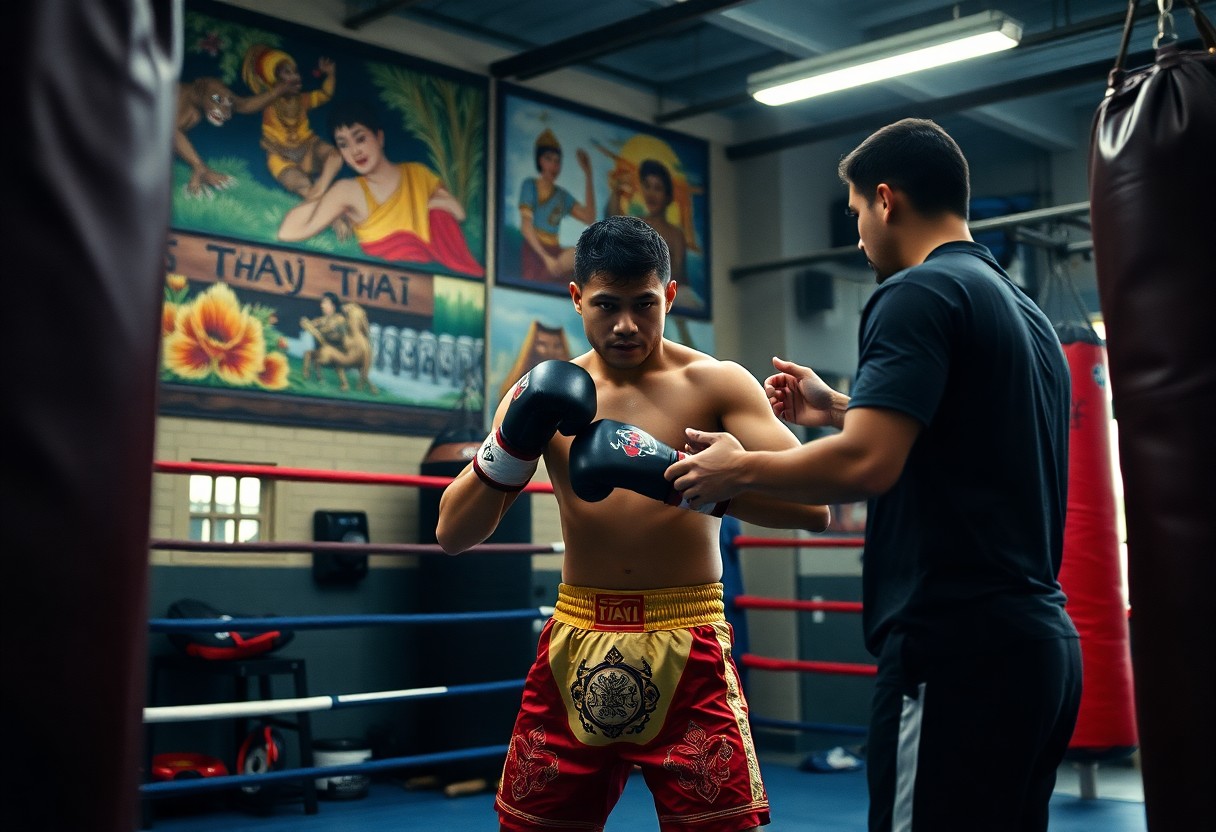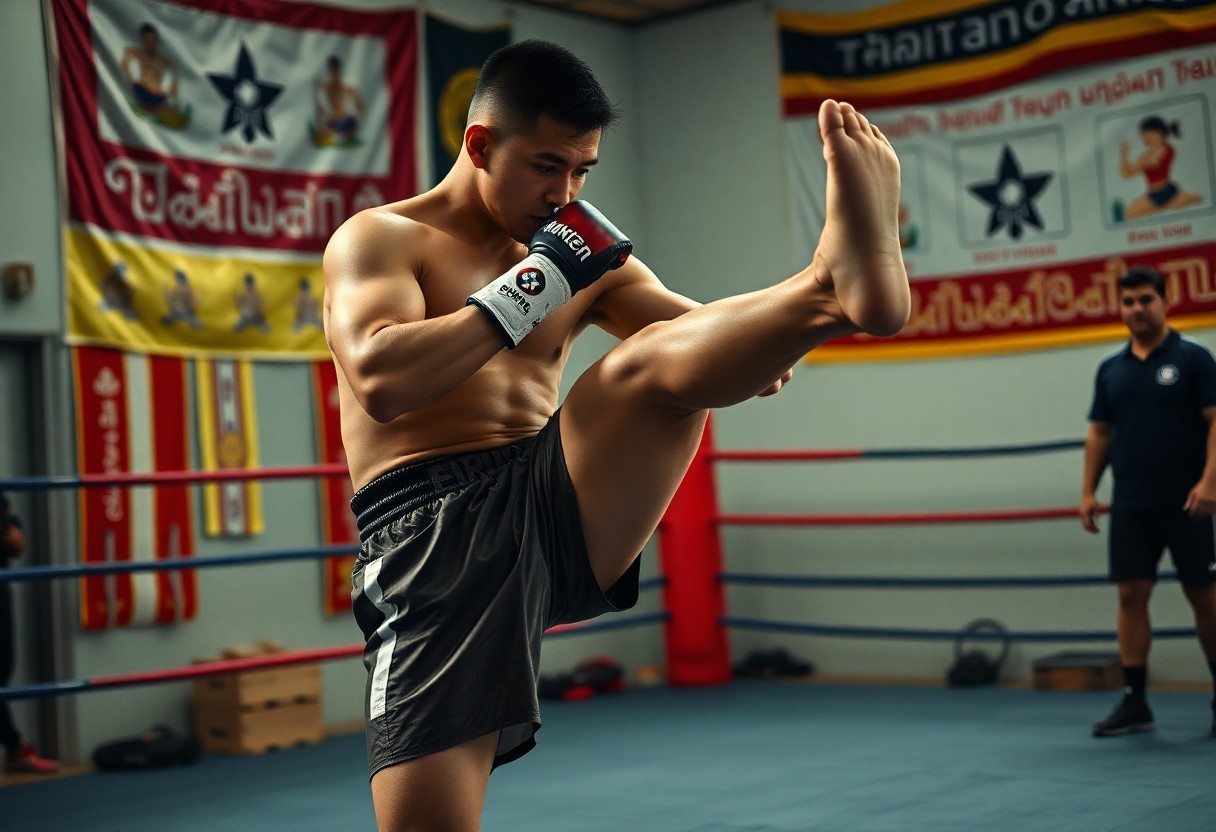
With your growing interest in Muay Thai, understanding how fights are scored can significantly improve your appreciation of the sport. Unlike Western boxing, Muay Thai’s unique scoring system evaluates every strike from kicks to clinch-work, with judges focusing on the effectiveness and dominance of techniques rather than just the quantity of strikes landed. You’ll discover that balance, composure, and technical execution play vital roles in scoring, while showing signs of fatigue or being visibly hurt can cost you points. Whether you’re a fighter or spectator, grasping these scoring nuances will enhance your Muay Thai experience.
The Core Principles of Muay Thai Scoring
Muay Thai scoring revolves around the demonstration of technical superiority and effective damage through controlled aggression and precise striking. Judges evaluate each round independently, focusing on the fighter who displays dominance through a combination of successful techniques, ring control, and visible impact on their opponent. The Thai scoring system differs from Western boxing by placing significant emphasis on the effectiveness of kicks and knee strikes, often weighing them more heavily than punches.
The Five Criteria: Importance of Technique, Power, and Timing
Scoring in Muay Thai breaks down into five main components: maximum damage, ring control, effective aggression, defense, and style-specific techniques. Your strikes must show clear technical execution while demonstrating power and proper timing. Judges look for clean hits that visibly affect your opponent, particularly during the crucial middle rounds where scoring traditionally carries more weight in traditional Thai stadiums.
The Role of Clean Scoring and Effective Striking
Clean scoring revolves around landing precise, unblocked strikes that show clear impact. Your techniques must penetrate your opponent’s defense and demonstrate control throughout the execution. Kicks to the body, knees in the clinch, and well-timed elbow strikes typically score higher than basic punching combinations.
The effectiveness of your strikes gets measured through visible reactions from your opponent – stumbling, wincing, or showing signs of damage. Teeps (push kicks) that disrupt balance, heavy leg kicks that affect mobility, and knees that visibly impact the midsection all demonstrate scoring effectiveness. Judges particularly value techniques that maintain traditional Muay Thai form while creating obvious physical effects on your opponent.
Decoding the Judge’s Perspective
Judges evaluate Muay Thai matches through a highly specialized lens that prioritizes effective striking techniques and ring control. Their trained eyes track not just the obvious powerful strikes, but also the subtle technical elements that demonstrate mastery of the art.
Insight into Judging Standards and Expectations
Your understanding of scoring improves when you recognize that judges look for clean hits, defensive prowess, and ring generalship. Each round gets scored independently, with judges assessing the balance between aggressive offense and technical defense. Points accumulate based on the fighter’s ability to land significant strikes while maintaining proper Muay Thai form.
The Subjectivity of Scoring: Consistency vs. Individual Interpretation
Despite standardized criteria, you’ll notice that different judges may score the same fight differently based on their background and interpretation. Some judges might value traditional Thai techniques more heavily, while others might give more weight to effective aggression and damage inflicted.
The variation in scoring stems from each judge’s unique perspective on fight dynamics. Thai judges typically emphasize the cultural aspects of Muay Thai, rewarding fighters who display proper technique and traditional style. Western judges might focus more on damage and dominance. You’ll see this reflected in international competitions where scoring can differ significantly between Thai and non-Thai judges, creating an interesting blend of interpretations that shapes modern Muay Thai competition.
The Impact of Scoring on Fight Strategy
Scoring awareness directly shapes how fighters approach each round in Muay Thai. Understanding the judge’s criteria allows you to strategically adjust your techniques and combinations to maximize point potential. Top-level fighters constantly read their opponent’s score while adapting their own game plan to stay ahead on the cards.
Adapting Techniques Based on Score Evaluation
Your ability to modify techniques mid-fight can make the difference between victory and defeat. When you’re ahead on points, focus on clean, defensive strikes and maintain ring control. If you’re behind, increase your output with scoring techniques like teeps and round kicks while looking for opportunities to land decisive blows that catch the judges’ attention.
The Offensive vs. Defensive Mindset in the Ring
Your fight strategy must balance aggressive scoring opportunities with defensive responsibility. Leading the dance lets you dictate the pace and rack up points, but leaving openings can cost you heavily. Smart fighters switch between forward pressure and counter-fighting based on their point position and remaining time.
Reading your opponent’s defensive patterns helps you identify scoring windows. When they shell up, target the body and legs. If they’re aggressive, use their momentum against them with counter elbows and knees that score high with judges. Successful fighters master both offensive combinations and defensive maneuvers, switching between them fluidly as the fight demands.
Common Misconceptions about Muay Thai Scoring
Many newcomers mistakenly believe that Muay Thai scoring revolves solely around knockouts and heavy strikes. In reality, you’ll find that clean technical strikes often score higher than wild power shots. The Thai scoring system values the aesthetic beauty and precision of techniques, including properly executed teeps (front kicks) and well-timed knees, even if they don’t visibly damage the opponent. Your ability to demonstrate technical proficiency can outweigh raw power in the judges’ eyes.
Understanding Control and Ring Generalship
Ring control extends far beyond simply walking forward or backing your opponent up. You’ll score points through strategic positioning, cutting off escape routes, and forcing your opponent to fight your preferred style. Effective ring generalship means maintaining optimal distance for your techniques while disrupting your opponent’s rhythm and game plan.
The Thai scoring system rewards fighters who demonstrate superior spatial awareness and tactical intelligence. When you control the center of the ring while landing clean strikes, you’re displaying what judges call “yuth” (fight IQ). Pushing your opponent into the ropes or corners only counts if you capitalize with scoring techniques. Traditional Thai judges particularly value fighters who can seamlessly blend defensive movement with offensive opportunities while maintaining proper posture and balance.
Navigating Controversies in Scoring Disputes
Scoring disputes remain one of the most debated aspects of modern Muay Thai, with judges’ decisions often sparking heated discussions among fighters, trainers, and fans. The subjective nature of scoring, combined with cultural differences in technique appreciation, can lead to conflicting viewpoints on fight outcomes.
High-Profile Fights and the Debate over Judging Decisions
The 2019 Buakaw versus Saenchai exhibition match highlighted the complexities of Muay Thai scoring, where traditional scoring criteria clashed with modern interpretations. Similar controversies emerged in the 2021 ONE Championship bout between Sam-A Gaiyanghadao and Rocky Ogden, where the balance between effective strikes and ring control became a major point of contention.
The Call for Transparency and Reform in Muay Thai Judging
Recent pushes for reform have focused on standardizing scoring criteria across international competitions. Organizations like WBC Muay Thai and ONE Championship have implemented clearer guidelines and instant replay systems to enhance transparency. You’ll now find detailed scorecards and post-fight breakdowns becoming more common at major events.
The evolution of scoring transparency has brought significant changes to how you can understand fight outcomes. Modern promotions now provide real-time scoring updates, allowing fighters and corners to adjust their strategy mid-fight. Digital scoring systems have reduced errors by 40% in major stadiums, while instant replay technology helps judges review critical moments. These reforms aim to align traditional Thai scoring methods with international sporting standards while preserving the art’s cultural integrity.
To wrap up
So, when you’re watching or competing in Muay Thai, understanding the scoring system gives you a significant advantage. You’ll need to focus on displaying effective strikes, maintaining balance, and showing dominance in the ring. Your success depends on mastering the art of scoring through powerful kicks, devastating knees, precise elbows, and well-timed punches. By recognizing how judges evaluate ring control, defensive skills, and overall fighting spirit, you can better adapt your strategy to win matches and advance in the sport.





